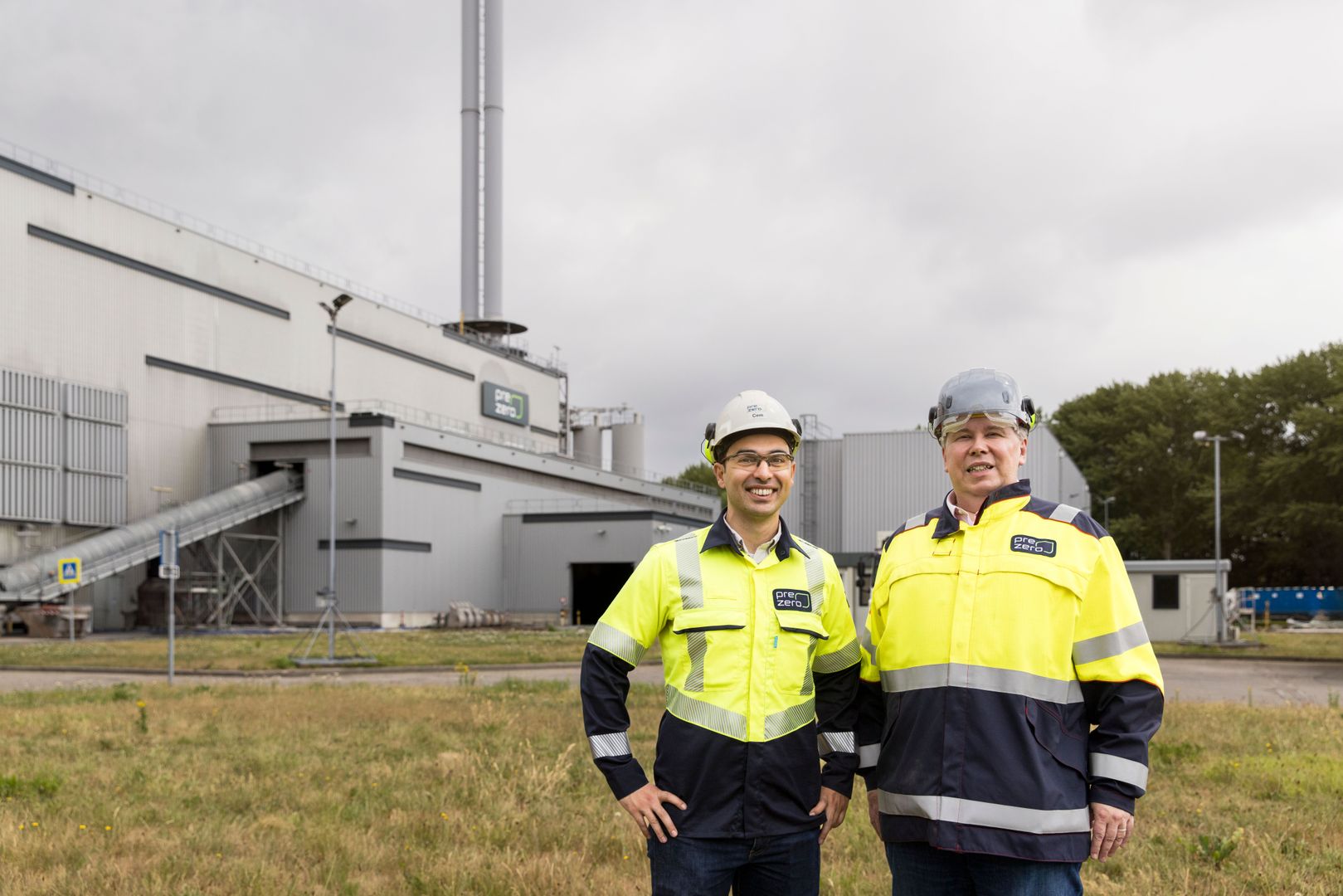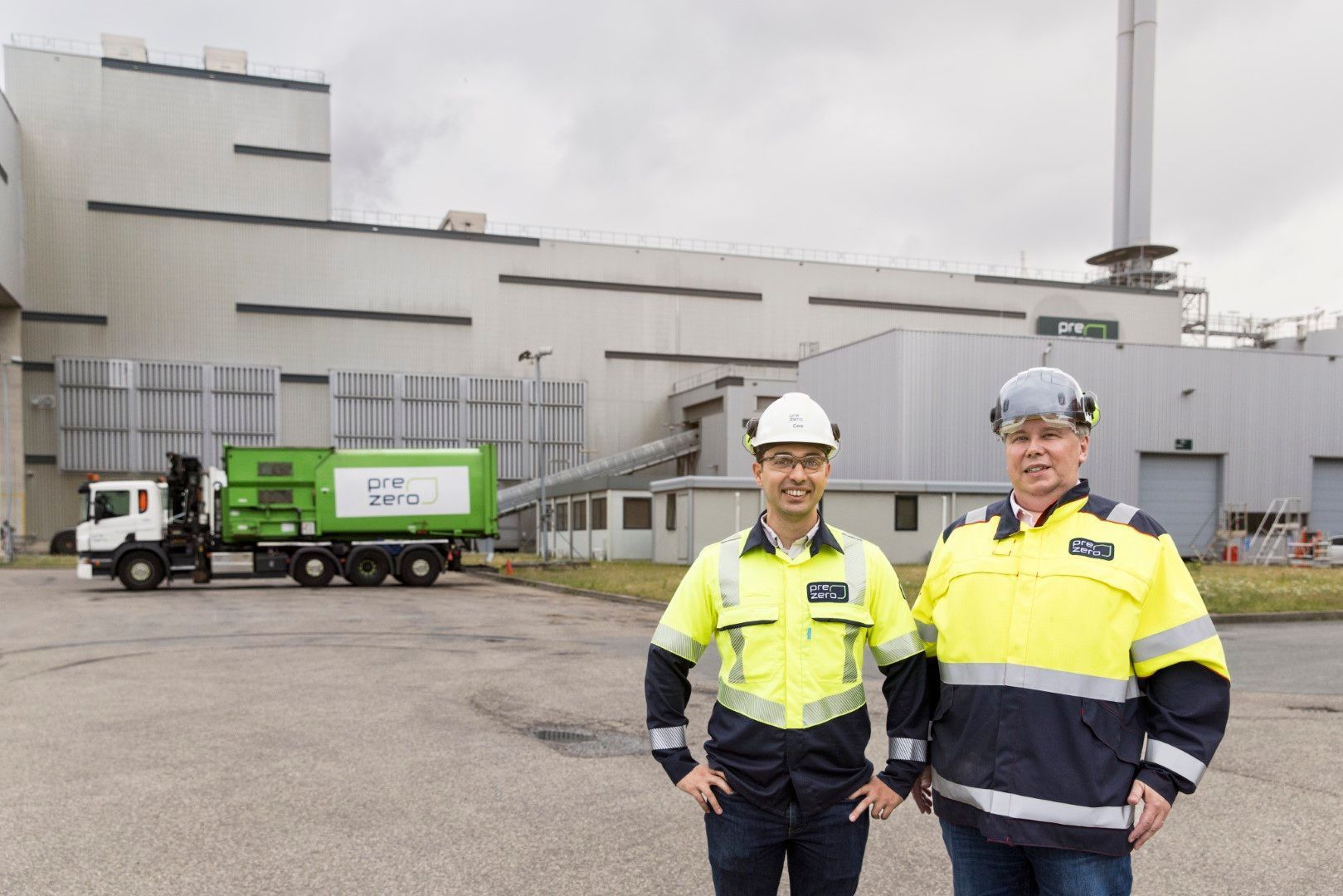No Flexibility Wasted: PreZero supports the Power Grid with mFRR
Gigantic heaps of municipal waste that cannot otherwise be recycled, constantly stirred by a giant crane with claw-like arms, the mundane becomes powerful: a look into the waste bunker from the control room of PreZero’s waste-to-energy plant in Roosendaal, Noord-Brabant, is something you won’t soon forget.

For Hans van Gurp, site director, and Cem Aksakal, process technologist, it is merely a sight that comes with the job. They know exactly how much waste is processed here up to 386,000 t of the permitted annual capacity and how much waste one grab can hold (around 6 t).
But they not only oversee daily operations of the waste incineration plant, they also help keep the Dutch electricity grid stable around the clock. 20 megawatts of the plant’s power generating capacity are on standby at the transmission system operator’s (TSO) fingertips to counter physical imbalances in the grid by providing downward balancing reserves (mFRR). By curtailing its own power generation, the waste incinerator lowers the pressure on the grid when there is too much power in the system. Connected to Next Kraftwerke’s Virtual Power Plant (VPP) through a remote control unit (“Next Box”) which links up to the plant’s process control system, the waste incinerator is part of a fleet of thousands of assets all over Europe. Together, they take on a responsibility for the power grid that was only fulfilled by fossil power generators in the past.

“The mFRR tender of the TSO takes place a day before a potential activation of our plant, so we always have enough time to factor in planned maintenance and can choose to not take part in the tender. We then indicate our non-availability through Next Kraftwerke’s customer portal or through e-mail. But this happens rarely, we are available for grid balancing almost every day of the year”, Hans van Gurp explains. In case of an activation by the grid operator – which happens around six times per year – the plant partially bypasses the steam turbine and thus reducing electricity production and export to the grid. Once the pressure on the grid has subsided, it ramps up power generation again. During the entire activation, the combustion process remains unaffected by the delivery of mFRR.
“We carried out a feasibility study on downward regulation and its effects on the turbine and generator before we signed with Next Kraftwerke. The results were positive, and the project was approved. Since then, we’ve never had any issues during mFRR activations andto this day we have not observed any negative effects on the turbine or the generator”, Cem Aksakal adds.
Since mFRR is a very valuable service for grid operators, it is highly remunerated. A claim PreZero can confirm after eight years of experience with the market. “We are very pleased with the returns we see. They have made up for the effort we needed to make to enter the market, no question. Naturally, prices are highly volatile given that it's a small market influenced by many external factors. At the moment, we're seeing high prices because the rapid expansion of solar and wind has led to increased demand for negative reserves. That's obviously beneficial for us“, Hans van Gurp points out.
Given the strong results in terms of technical execution and financial returns, it’s hardly surprising that further steps to boost its own industrial flexibility are on the table. Plans include installing a battery storage system with a capacity of 20 megawatt-hours. Expanding into new markets, such as day-ahead spot market trading, is also under consideration. “We’re really very happy with our collaboration with Next Kraftwerke. No matter which projects we tackle next, thanks to their successful track record, they’ll always be our first point of contact”, Hans van Gurp comments.
Facts:
| Provides Grid Flexibility | mFRR Up |
| Link to partner website: | PreZero International |
| More about Next Products: | Products & Services |


